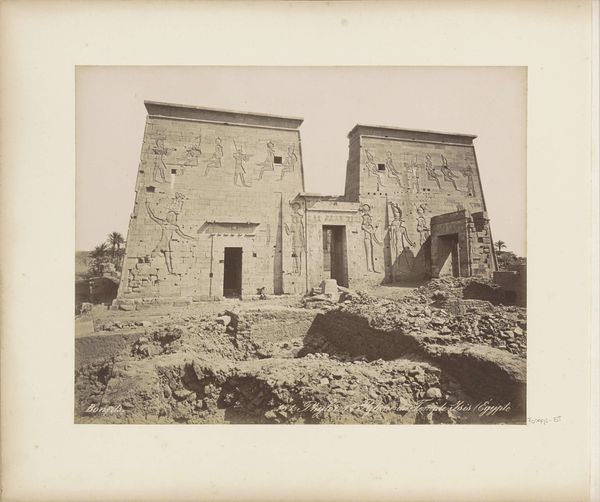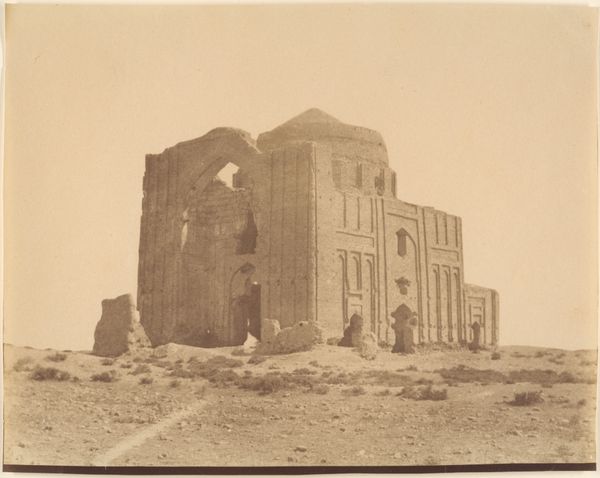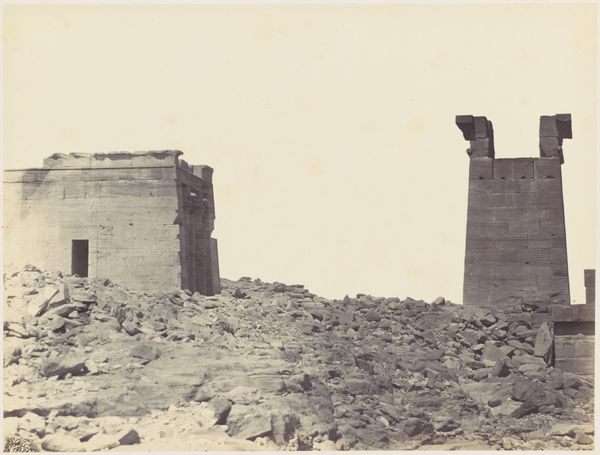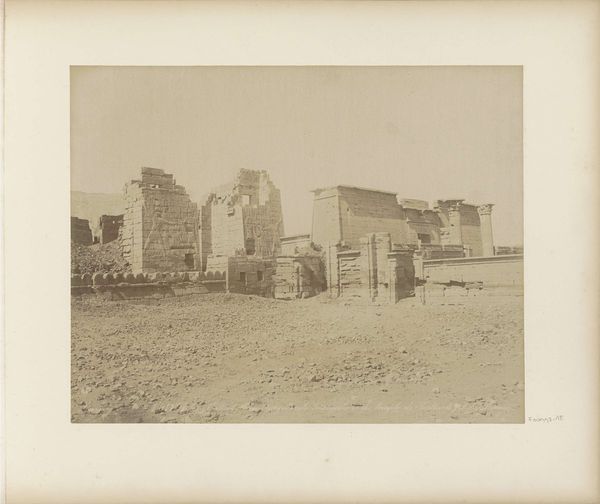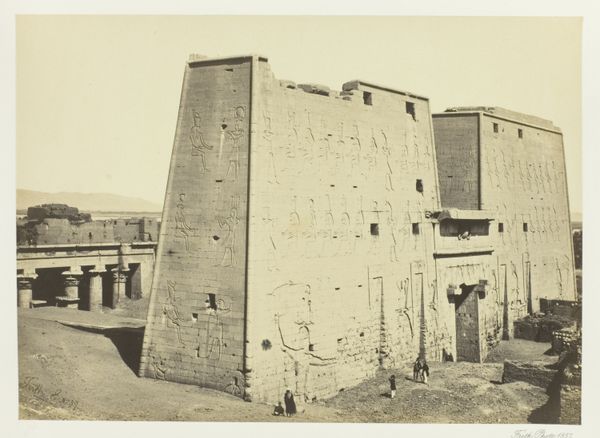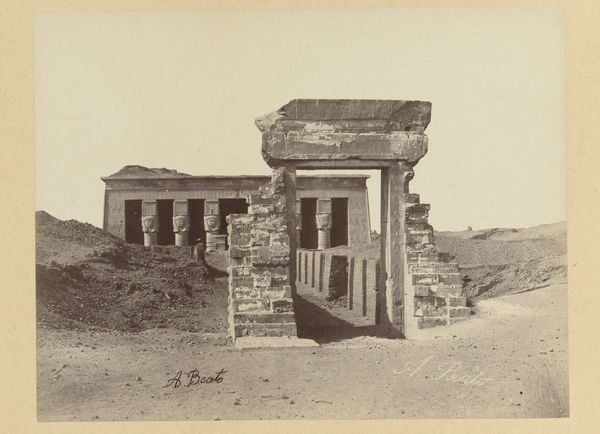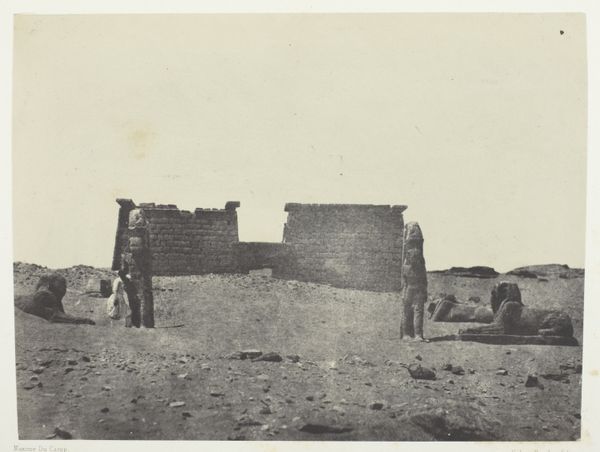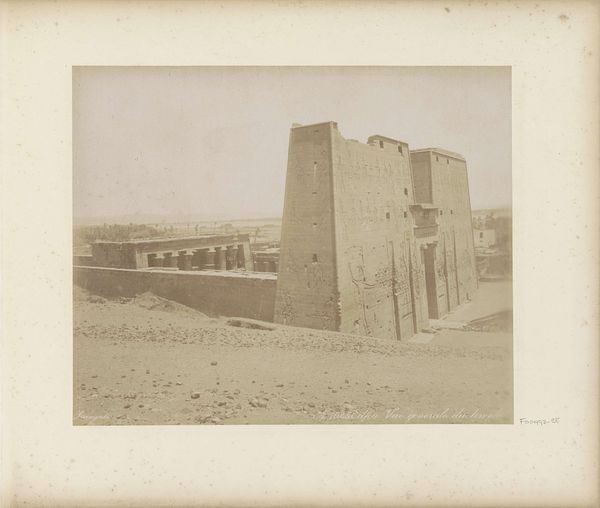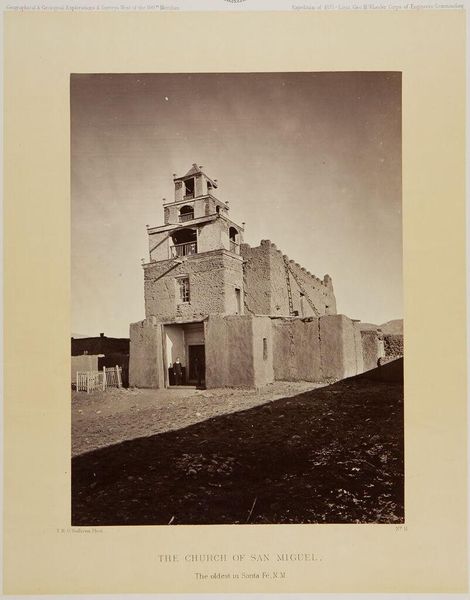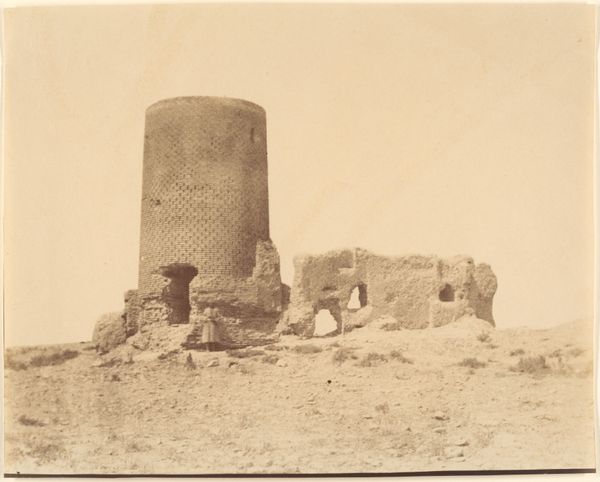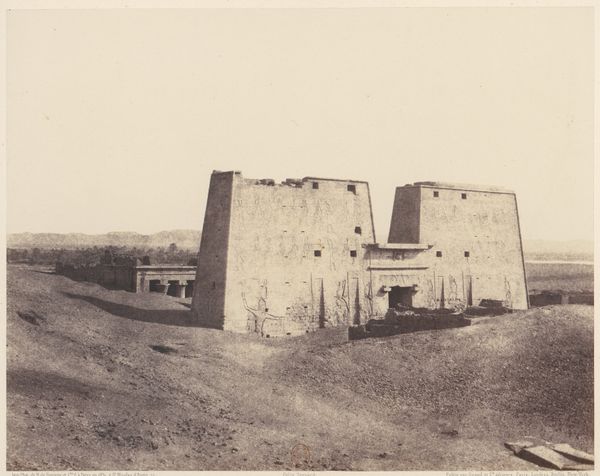
print, photography, architecture
# print
#
landscape
#
ancient-egyptian-art
#
photography
#
ancient-mediterranean
#
architecture
Dimensions: height 218 mm, width 279 mm
Copyright: Rijks Museum: Open Domain
Curator: This sepia-toned photograph, attributed to Maison Bonfils and dating from about 1870 to 1898, captures the "Tempel van Ad Dakka in Nubië (Zuid-Egypte)". It’s currently held in the Rijksmuseum's collection. What are your first impressions? Editor: Vastness. Bleached-out vastness. There’s such weight in the architecture, in the temples themselves, but the print has this ethereal quality. Like looking at a dream, or perhaps a faded memory. Curator: Indeed. Think about the physical labor involved in quarrying, transporting, and assembling those massive blocks. Consider also the photographer's labor: lugging bulky equipment through the desert. And the intended consumer, seeking picturesque and educational souvenirs. Editor: Absolutely. It hits me that someone had to actually go there. You can imagine the artist pointing a camera at it. To me there is a profound silence in this captured space. Makes me wonder about all the stories those stones could tell. It’s powerful how the image evokes something both grand and very intimate. Curator: Bonfils operated a commercial studio, mass-producing images for European consumption, feeding orientalist desires. The reality was often obscured to reinforce those pre-conceived notions of exotic lands and timeless monuments. Editor: That's true, but still, it's like a portal. You catch a little dust in the wind, or hear an echo in the hall...even in mass production, the object still retains a spark, don’t you think? I can almost feel the heat radiating off the stones. What a feat. Curator: These photographs helped to solidify and spread Western understanding, and at times, misunderstandings, of Egyptian society and its antiquities. They circulated widely, shaping popular opinion, impacting collecting and tourism. Editor: So, looking at it now, beyond the historical material layers and all these stories, it’s almost an artifact in itself, speaking of our longing for meaning, even reaching into our past. Curator: Precisely. And photography, as a mass medium, allowed for the democratization of such "artifacts". Everyone could own their little piece of ancient Egypt, packaged neatly in a photograph. Editor: I guess, as in our moment today, a memory captured by camera, yet somehow transcending the apparatus to create some bigger story to be discovered. Thanks! Curator: My pleasure. Examining the layers of production and consumption opens up many avenues of interpretation.
Comments
No comments
Be the first to comment and join the conversation on the ultimate creative platform.
